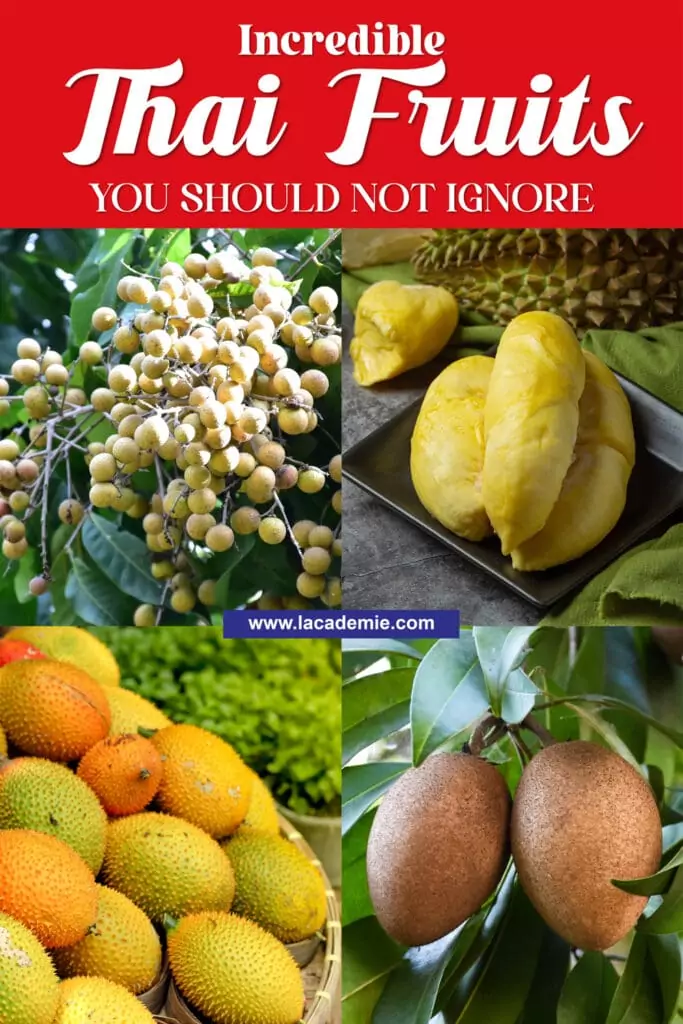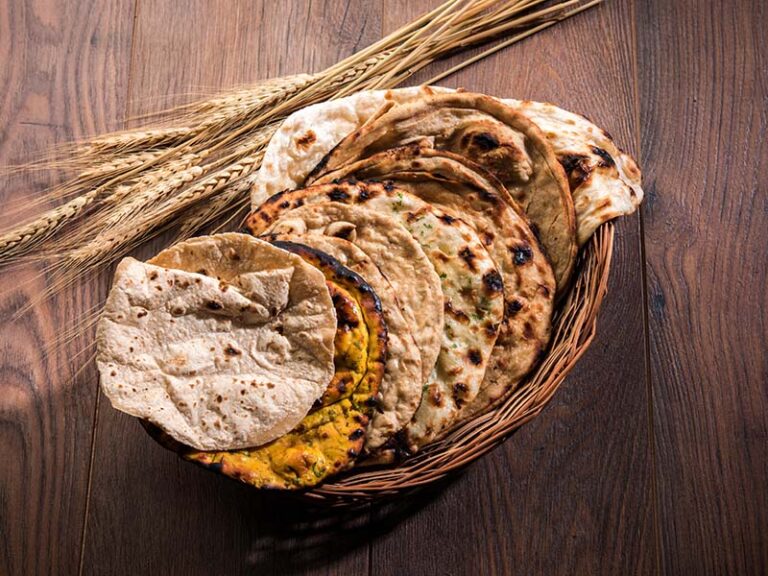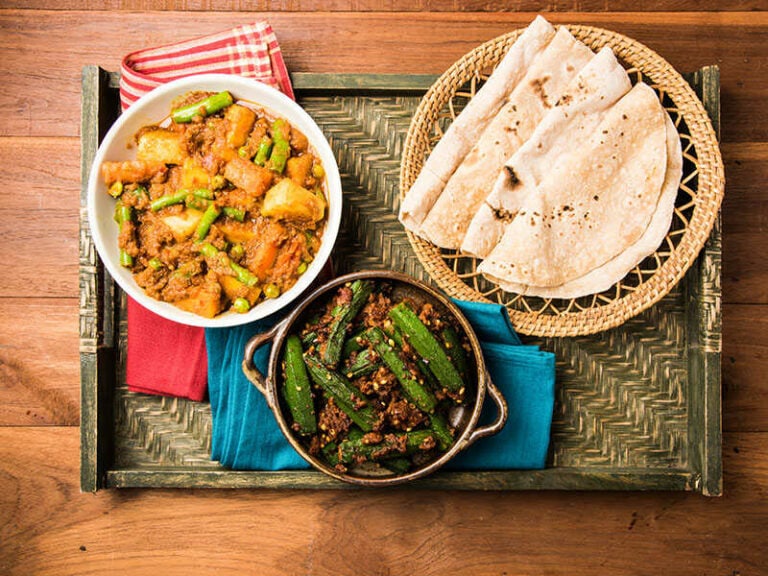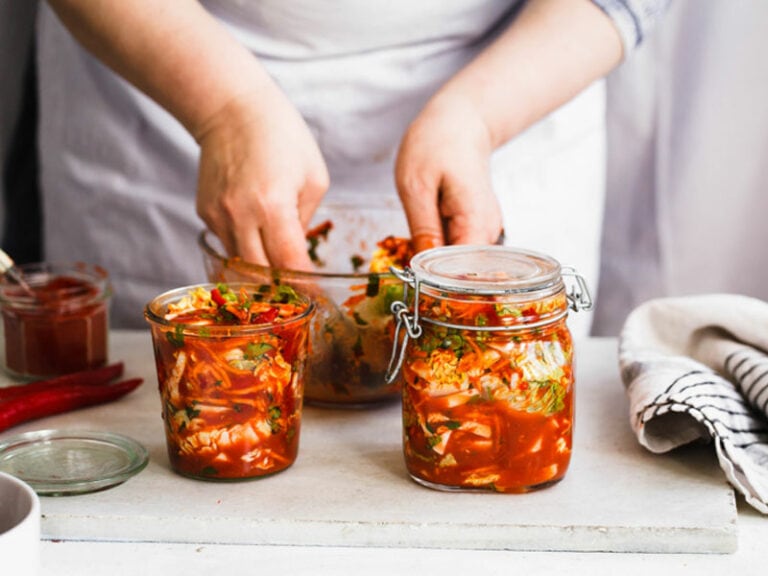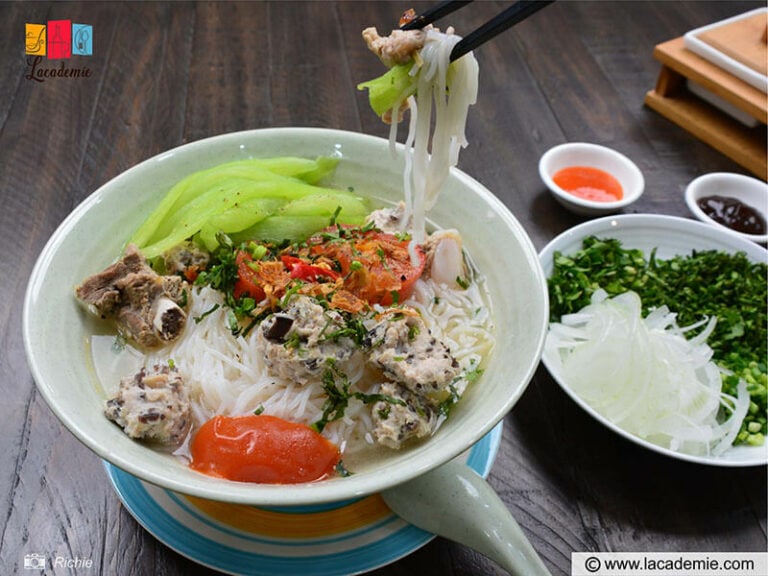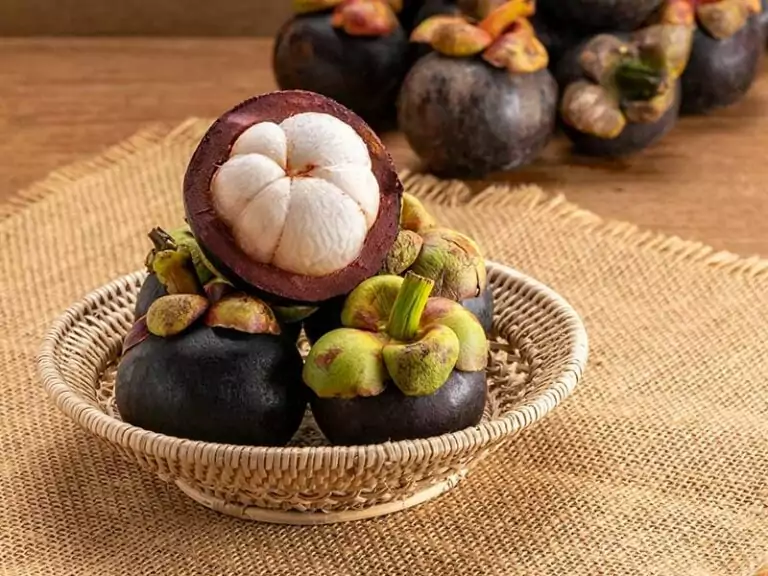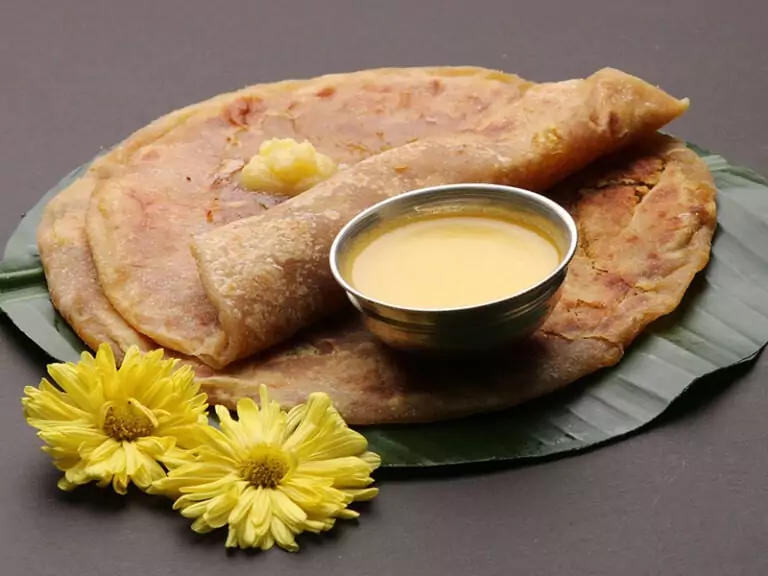It is time to explore exciting information about Thai fruits. Thailand is a paradise of many delicious and unique tropical fruits. If you plan to come to Thailand, you should not ignore the excellent fruits I am about to offer in this article.
They will be great dessert options for you. If you do not want to miss any fruits, do not neglect them when reading this article. Let’s expand your knowledge with valuable information about Thai fruits.
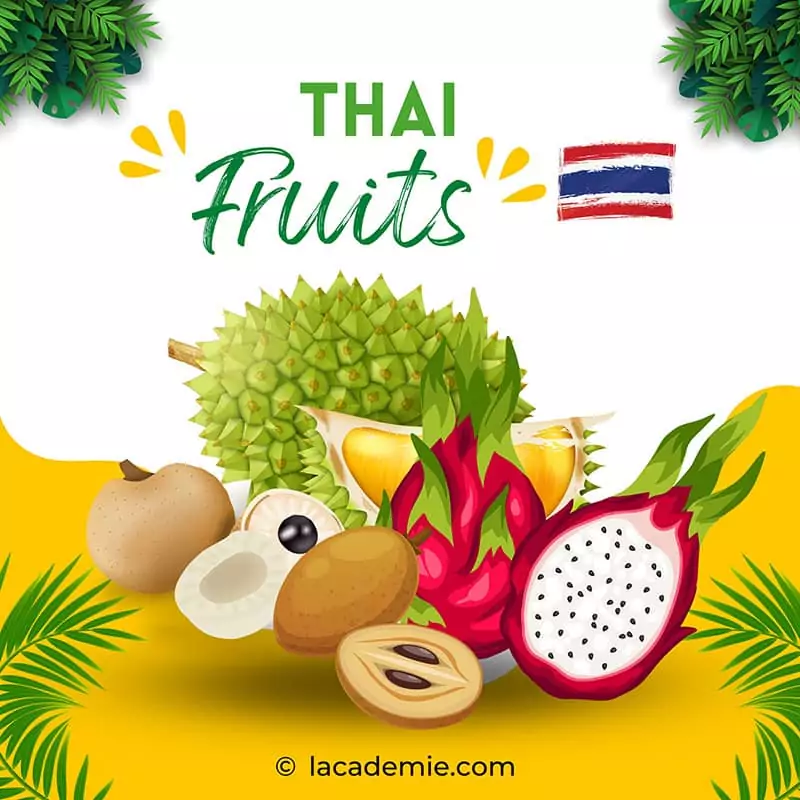
8 Fantastic Sweet Thai Fruits You Should Try
If you love the sweetness of fruits, it is impossible to miss this part. It will give you a list of different types of fruits that have prominent sweetness. It is time to satisfy your mouth with these sweet options.
1. Durian – Turian
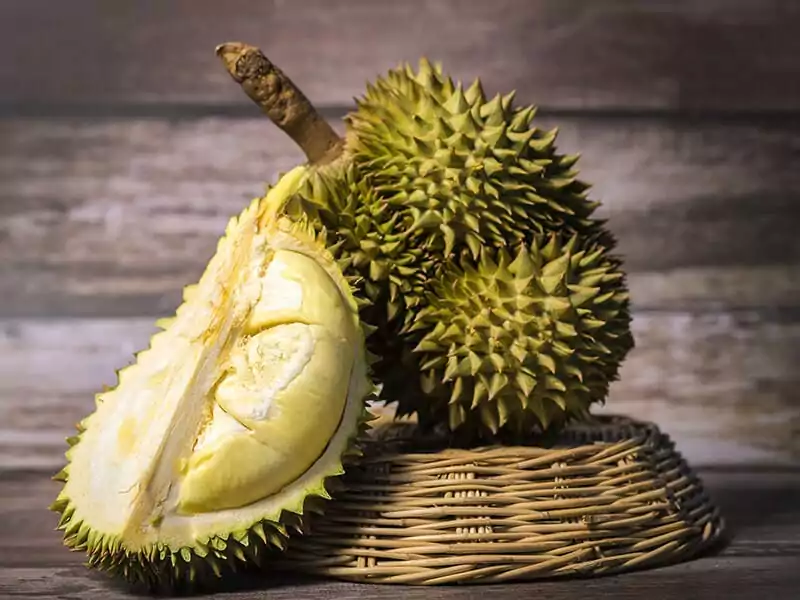
In Thailand, many people love and also hate durians. If the mangosteen is the Queen of Fruits, durian is dubbed the “King of Fruits” in Southeast Asian countries – about 30 various types of durian found in Thailand, Vietnam, Indonesia, etc.
It originates in Borneo and Sumatra. It is a well-known export product of Thailand and appears on many international markets. Significantly, the striking, potent, and distinctive scent make it banned or restricted from appearing in public places.
In terms of appearance, most durians have oblong and round shapes. The skin is green or brown, and countless thorns are on the skin surface. Note, they can hurt you when consuming it, so be careful!
Ripe durian has bright yellow flesh, and it has many segments. Each delicious segment will contain a large inedible seed. You will be fascinated by tenderness, creaminess, smoothness, and sweet flavor when enjoying it.
Nutrients: Rich in carbs, fat, thiamine, vitamin B, C, manganese, fiber, oleic acid, and palmitic acid
Season: It is expected from April to August in Thailand.
How to eat: Use a knife to separate its rind. Get sections out of durian and eat flesh around the seed.
Let’s listen to some reviews of Westerners when eating durian.
2. Longan – Lamyai
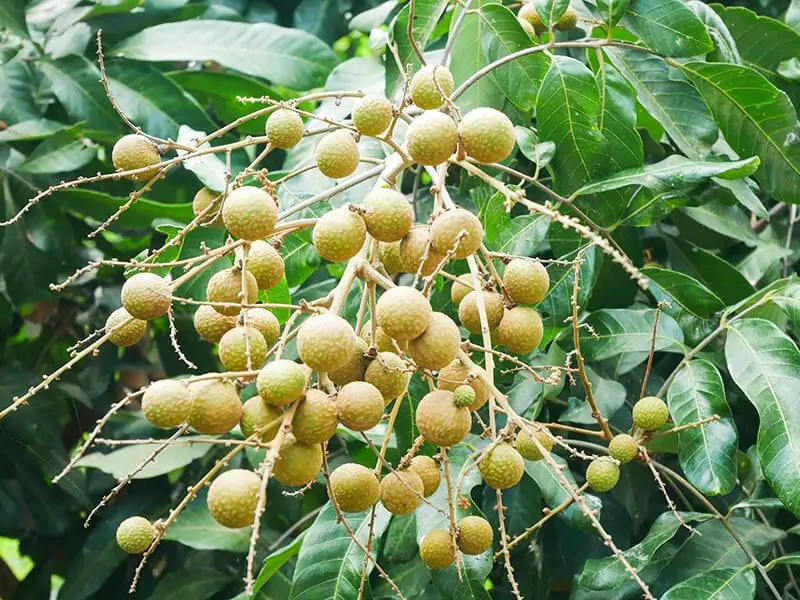
If you can come to Thailand, you should try Longan. It originates in the mountains located between China and Myanmar. Another idea assumes that it is native to India, Thailand, North Vietnam, and New Guinea. It is good for women after giving birth in Southeast Asia.
The traces showed it existed from the Han Dynasty in 200 BC. In terms of structure, it is pretty similar to the rambutan and Lychee when it has skin, flesh, and a seed. Its skin is light green or brown. An opaque flesh layer will surround a black round seed.
You will be impressed by the juiciness and its enchanting flavor when eating. In Thailand, it was grown much in the Chiang Mai region in northern Thailand.
Its name means “Dragon Eye” since its seed resembles the dragon’s eye. Thai Longan (Longtan) is sweeter than the Chinese version.
Nutrients: A source of carbs, calories, vitamin C, riboflavin, and potassium.
Season: It is ripe from June to August in Thailand.
How to eat: The easy way to eat Longan is to peel its skin and eat its flesh. Or, you can slice a line on its meat and get the seed before eating.
3. Lychee – Linjee
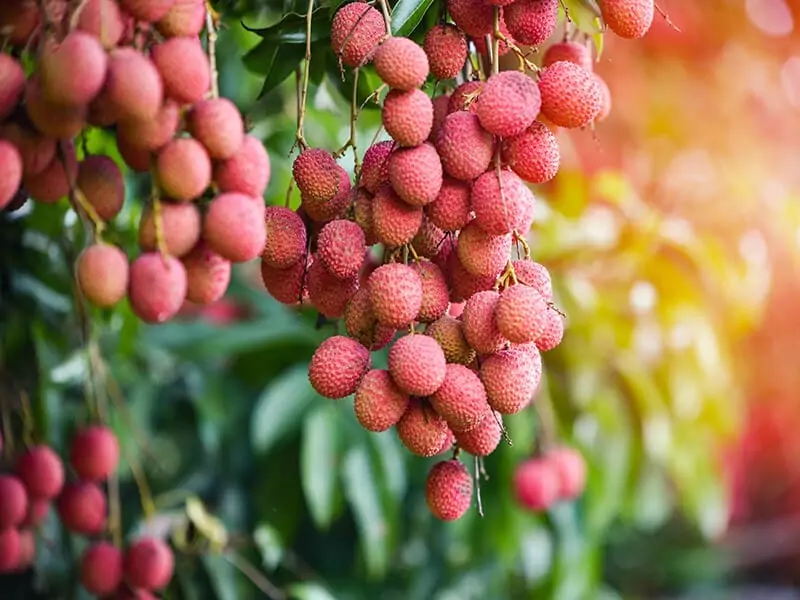
It is fantastic to enjoy the fresh taste of Lychee in Thailand. It is a member of the Sapindaceae family. This fruit was first found in Guangdong, Yunnan, and Fujian provinces and Southeast China in the 11th century.
The sweet flavor is the dominant taste of Lychee, but it will be lighter than Longan. Its flavor is the interference of strawberry and watermelon. However, you can also feel a bit of citrus and rosewater taste from this fruit.
You can easily recognize Lychee, thanks to its rough and pink-red skin. Its whitish flesh will be a perfect choice for desserts. It has a brown or black seed in the middle, and you should remove it when consuming.
It is an excellent option to enjoy fresh Lychee to experience its natural and charismatic taste. In addition, you can buy canned Lychee in stores to consume. Thai people often make a syrup with Lychee or combine it with bananas and coconut milk to prepare desserts.
Nutrients: Rich in carbs, fat, vitamin C, magnesium, phosphorus, and potassium.
Season: Its season runs from April to June.
How to eat: To eat it, you should start peeling its skin, discard the seed, and consume the flesh.
Explore all incredible information about yummy Lychee.
4. Jackfruit – Kanoon
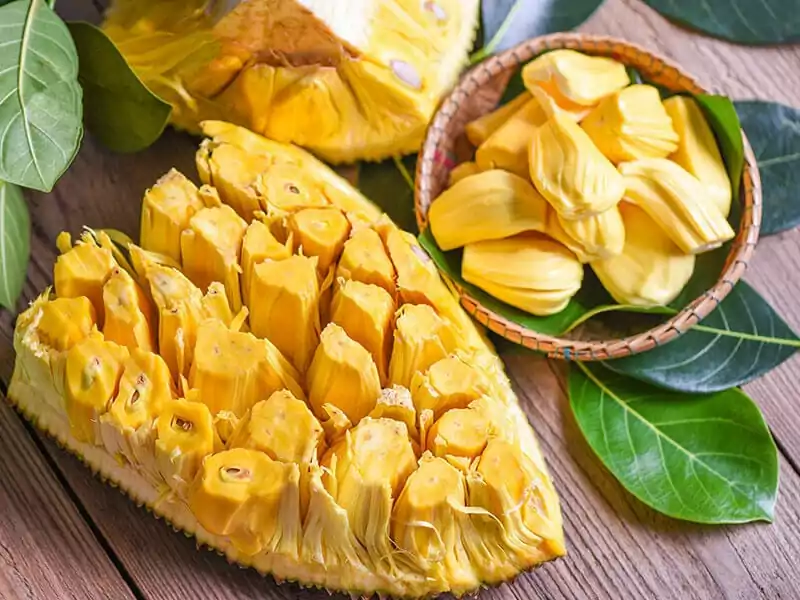
Jackfruit is a member of the Moraceae family. It originates and grows well in tropical countries, such as Southern India, Malaysia, Sri Lanka, and Indonesia. You can easily find it as a light meal in various Thai street carts.
Typically, Jackfruit usually has a round or oval shape. Unripe Jackfruit will have yellowish-greenish thick skin, and it will turn yellowish-brown when ripe. There are countless small pimples on the skin surface, and they make up hexagonal tubercles.
When cutting it into 2 halves, a fibrous (whitish core) will show up. It has numerous yellow segments, and each one will contain a seed. Its flesh often has a natural and charismatic sweetness, and you will feel a bit crunchy when consuming it.
Thai people often eat raw Jackfruit as a dessert fruit or combine it with different kinds of coconut or coconut milk to create other great dessert recipes. It also appears in Thai curries or dried snacks.
Nutrients: A source of carbs, protein, dietary fiber, vitamin B6, vitamin C, potassium, and other minerals.
Season: It is available from October or November to May in Thailand.
How to eat: Before eating it, you should slice it into 2 halves and separate its segments by your hands. Remember to remove the seeds before eating their flesh.
5. Chico – Lamut
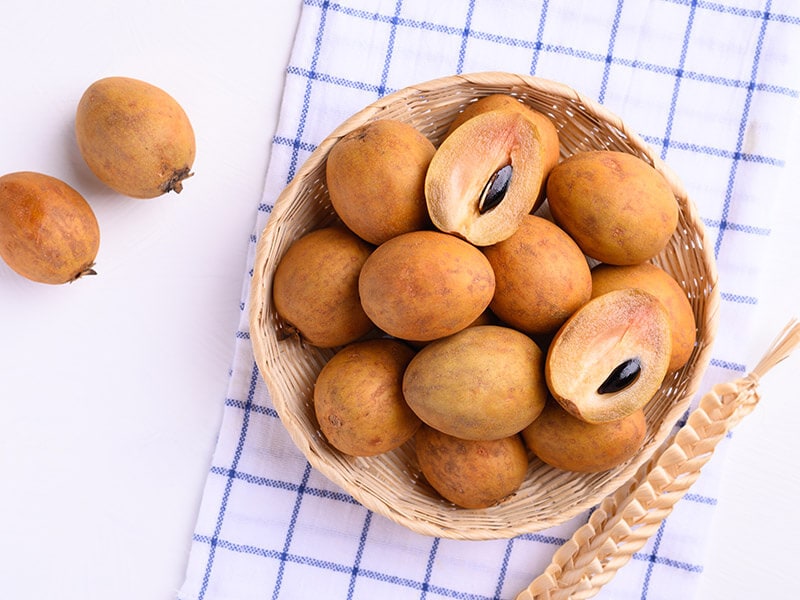
Chico or Manilkara Zapota is one of the favorite fruits of tourists when traveling to Thailand. It is derived in Southern Mexico, Central America, and the Caribbean. Spanish brought it to the Philippines and other Southeast Asian countries.
Chico also appears in many familiar Filipino dishes. It is a large berry with a diameter of about 2 to 3 inches. It is hard to resist the sweet taste and the juiciness of its flesh.
It has yellow or earthy brown shades and grainy consistency. Typically, there are about 1 to 6 seeds inside. Its seeds look like beans with their hardness, black hue, and glossy surface. The unripe version has a lot of saponins that cause dry mouth.
Nutrients: A source of iron, copper, magnesium, phosphorus, potassium, calcium, vitamin C, A, and B.
Season: It is available from September to December in Thailand.
How to eat: You will use a knife to cut Chico into 2 parts and get its flesh with a spoon. It is necessary to remove its seeds while consuming.
Let’s check the real flavor of excellent fresh Chico.
6. Gac – Fak Khao
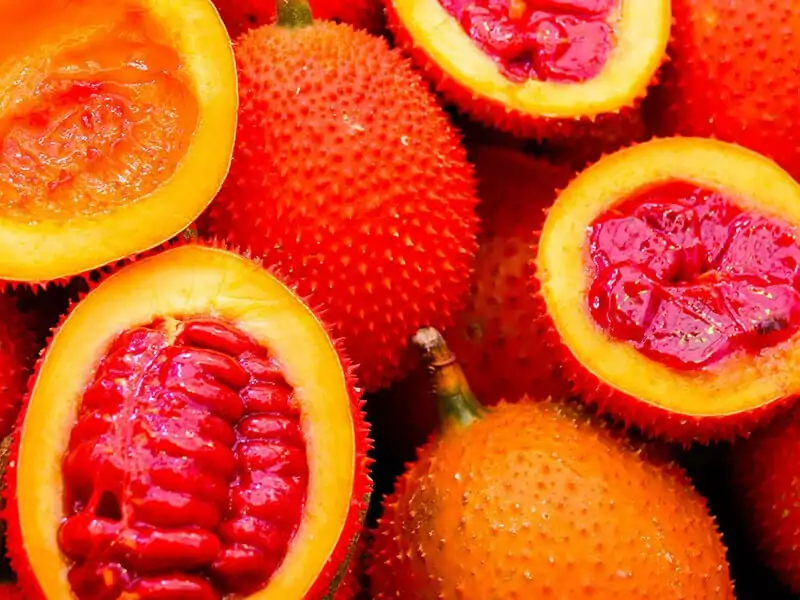
Gac is a common vine in Southeast Asia and Northeast Australia. It originates in Vietnam and pays an important role in numerous classic Vietnamese sweet dishes. In addition, it was also used as medicine about 1200 years ago in Vietnam and China.
Gac usually exists in round or oblong shapes with small spines covered. It will turn from green to orange and red when ripe. It contains yellow flesh and a red seed inside. Small Gac will consist of less edible aril than the large one.
It has a pretty mild flavor, so it is suitable to add to many culinary recipes. In particular, it includes many beta-carotene and lycopene. Usually, people will love Gac juice more than the fresh version. Also, it usually appears with ice cream for dessert.
Nutrients: Rich in fatty acids, vitamin E, carotenoids, flavonoids, and polyphenol compounds.
Season: Its season lasts from December to January in Thailand.
How to eat: To eat Gac, you should begin cutting it into 2 parts and scoop its flesh and seeds out with a spoon.
7. Dragon Fruit – Gao Mung Gorn
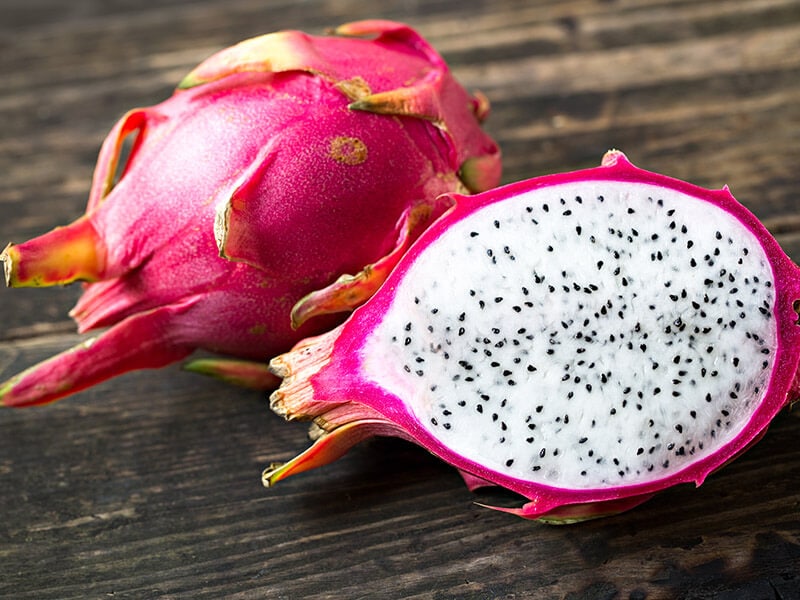
Dragon fruit is also known as Piyata in many other regions of the world. It is native to Mexico, Guatemala, Honduras, and South America. Nowadays, dragon fruit cultivation occurs in Southeast Asia, East Asia, India, and other tropical regions.
Its appearance looks like the head of the dragon, so it has the name “Dragon fruit”. It looks outstanding with reddish-purple skin. In particular, green fins create characteristics for it. You can choose white, yellow, or deep-purple flesh to consume.
It consists of countless edible tiny seeds distributed in its flesh. Sweet and a little sour taste is its typical taste. You can think of pear and kiwi’s taste when enjoying it. The purple flesh version will be sweeter than the white and yellow version, but it is rare.
In Thailand, people usually consume it with a spoon. In addition, it is a common option to add in fruit bowls or juices.
Nutrients: It includes carbs, calories, vitamin C, calcium, fiber, and sodium.
Season: Its main season extends from April to October and another season from November to March.
How to eat: It is easy to consume Dragon Fruit by peeling the rind and cutting it into small pieces before eating. Furthermore, It is possible to cut it into small slices and consume its flesh from the skin.
8. Papaya – Malakor
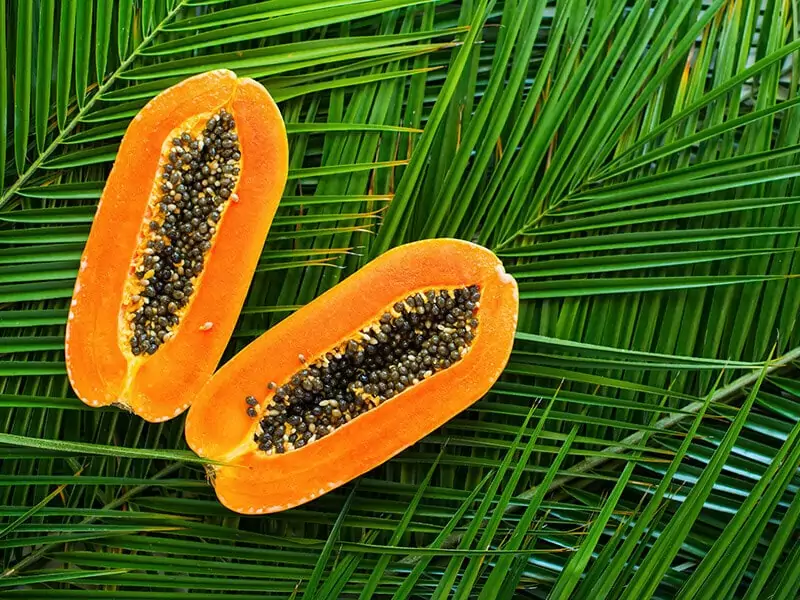
Papaya plays an important role in many delicious Thai recipes. It is a member of the Caricaceae family and native to Mesoamerica. Nowadays, it is cultivated commonly in India, Mexico, Central America, Thailand, and other Southeast Asian countries.
It belongs to the berry category with a diameter of about 3.9 to 11.8 inches. Normally, you can realize unripe papaya thanks to its green skin. However, it will turn yellow or orange when mature. You can find its flesh in green (unripe) and yellow, red, or orange (ripe).
You will fall in love with its soft and smooth texture. It is easy to think of the texture of ripe avocado while consuming it. The enchanting sweetness will captivate you immediately. It has countless black seeds in the large central cavity.
It is loved by many natives and tourists. Thai people often consume it raw or prepare delicious smoothies or desserts from ripe papaya. Moreover, it is common to take advantage of the crunchiness of unripe papaya in making outstanding salads.
Nutrients: Rich in carbs, calories, fiber, vitamin C, K, A, calcium, magnesium, potassium, and sodium.
Season: The best season runs from March to June in Thailand.
How to eat: You just need to cut it into 2 halves, remove all bitter seeds, and scoop its flesh with a spoon. To use unripe papayas, let’s start peeling its skin and cut it into thin fibers to add to salads.
3 Incredible Tart Thai Fruits To Tickle Your Taste Buds
Are you a fan of tartness? It is time to stimulate your taste buds with sour Thai fruits. I am sure you will love their flavors on the first try. It is not difficult to find it in delicious Thai drinks and foods. Let’s give them a shot now.
9. Tamarind – Makam
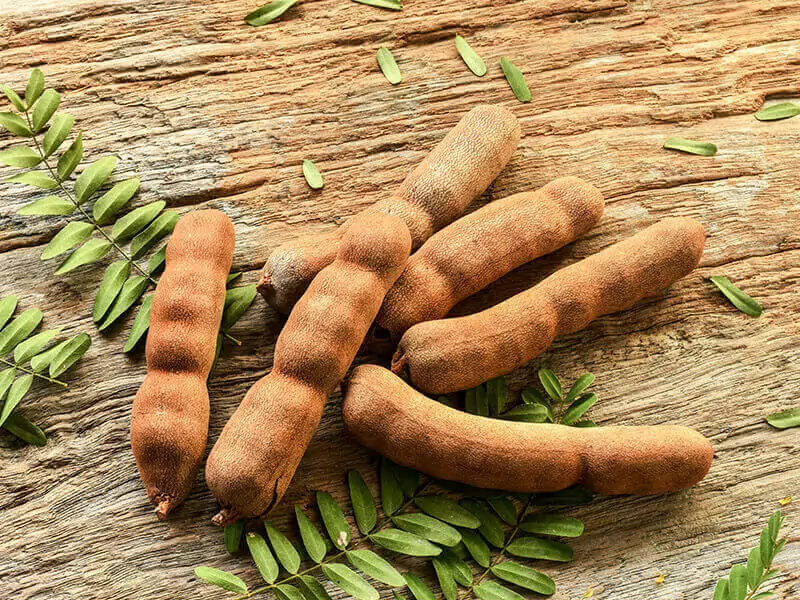
It is known as Makam in Thailand. It comes from the flower of a Leguminous tree. Tamarind is derived in tropical African countries. Tamarind cultivation is widespread in Southeast Asia and many other areas globally.
Tamarind usually grows length with green or brown skin. When ripe, its flesh will be separated from the skin, and the peel will become dry and crispy. Its meat is brown and contains many inedible seeds.
Thailand has 2 tamarind versions, including sweet and sour types. Sour types are the main element in chili sauce and other staples in Thailand like Tom Yum and Pad Thai.
The sweet version usually has a sweet taste and a bit of tartness, and it appears commonly in candies, drinks, and snacks.
Sour tamarind appears everywhere in Thailand, while sweet one is pretty rare. You can find it in Phetchabun province, which will be more expensive than the sour type.
Nutrients: A source of calories, protein, carbs, fiber, and vitamin C.
Season: It is available from November to February (sweet version) and year-round (sour version) in Thailand.
How to eat: You just need to remove your skin by hand and eat its flesh and remember to discard the seeds.
10. Starfruit – Ma Gueng
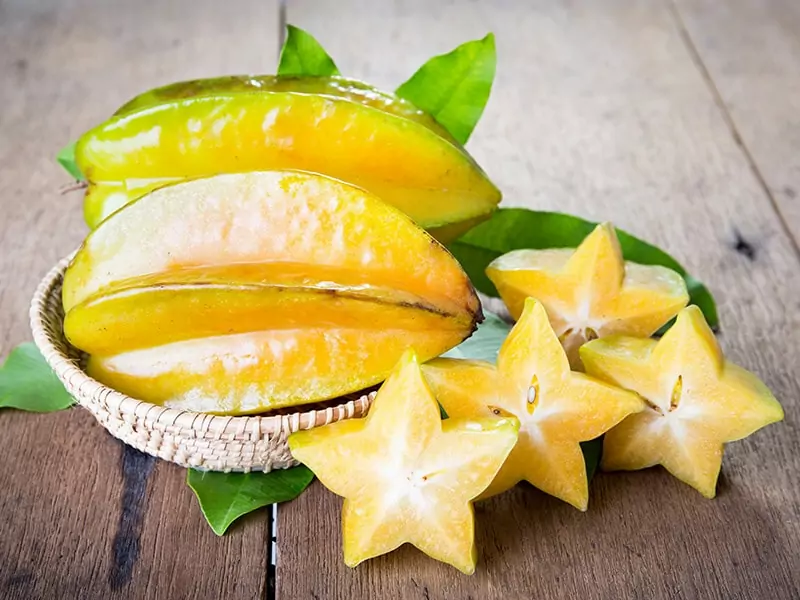
Starfruit or Five Fingers is an essential fruit in Thai cuisine. Southeast Asia is the home of this fruit. Nowadays, it is used widely in South Asia, Brazil, East Asia, the US, and the Caribbean.
When you cut it horizontally, you will have slices with a star-like shape. This comes from its characteristic structure with five ridges along its sides. It has two main versions, including small sour and larger sweet versions.
The difference between them is a sour level since the sour version has a higher oxalic acid content than another one. It has orange-yellow skin when unripe, and yellow will appear when ripe. You will fall in love with its succulent and crunchy flesh.
It has a sour flavor and a bit of sweetness, depending on the type. Its flavor is pretty similar to apples or pears. You can enjoy the raw version or make juice and salads with starfruit. It is a common choice to mix with shrimp in many recipes.
Nutrient: It consists of carbs, fat, calories, vitamin C with starfruit.
Season: It is common in Thailand from October to December.
How to eat: You can eat the whole starfruit after washing it with water.
11. Hog Plum – Makok
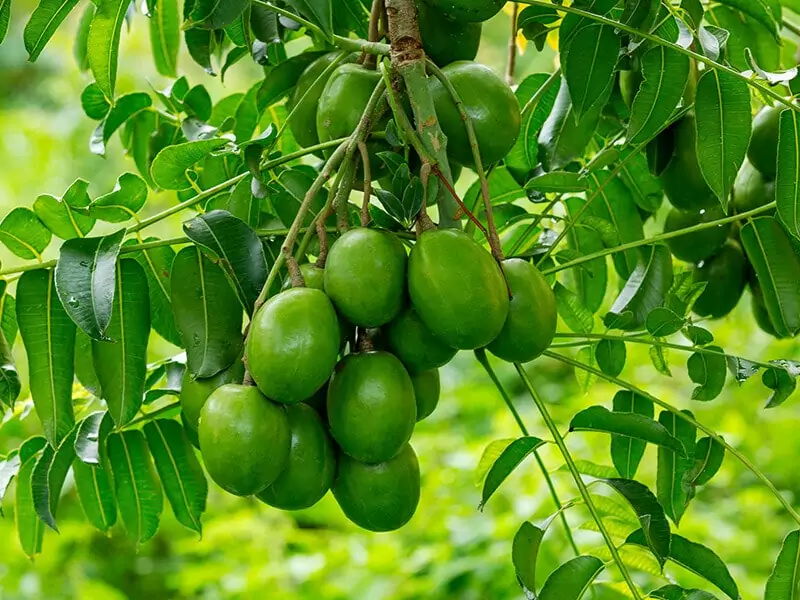
It is a pity not to try Hog Plum or Makok in Thailand. This fruit with a H at the beginning of its name comes from the Americas. The Portuguese brought it to Asia, and it has become the essential fruit in this continent. It is well-known in South Asia, Africa, and Southeast Asia.
You can recognize it thanks to the characteristic green skin. It has white and crunchy flesh with a seed in the middle. The tartness is the primary flavor, and its flavor resembles a famous apple variety: Granny Smith.
It plays an essential role in Thai cuisine when appearing in many delicious recipes. It is one of the ingredients that create the incredible flavor of Som Tam (Thai papaya salad). Thai people often eat it raw or make juice, jellies, and concentrates.
Nutrients: Protein, carbs, calcium, carotene, vitamin C, B1, B2, and iron.
Season: The peak season extends from July to September.
How to eat: The easiest way to consume it is to remove the skin and cut it into 2 halves. Then, remove the seed and retain its flesh.
It is simple to make delicious Hog Plum curry with these instructions.
10 Fruits With Mixed Flavor Of Sourness And Sweetness
The fruits in this section are for those who love the mixture of sweetness and sourness. This combination always leaves a profound impression in your mind after consuming.
12. Mangosteen – Mangkut
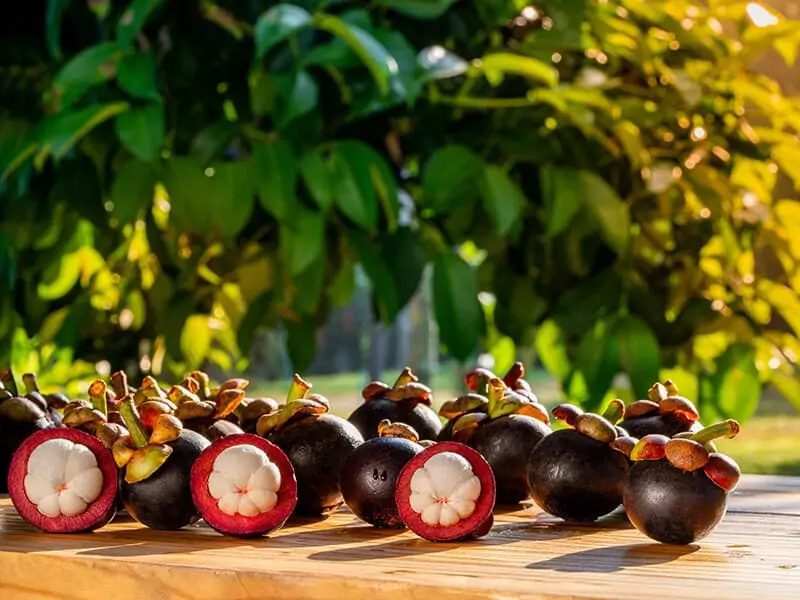
Mangosteen is an indispensable name in this list. People in Thailand and Southeast Asian countries consider it the “Queen of Fruits”. It is native to Southeast Asia and has grown in Malaysia, Sumatra, Mainland, Southeast Asia, and the Philippines since ancient times.
Most mangosteen will have green skin when unripe and will gradually turn to dark purple when ripe. It takes more than 10 days to perform this transition stage, and you can use it at this time.
After removing its skin, you will encounter its flesh containing about 5 to 8 segments. They look so appealing and succulent. You will immerse yourself in the sweet and light sour taste of it right away. Its charming aroma will wake you up.
There are many excellent Thai recipes created from mangosteen. It often acts as an essential dessert after each meal. Moreover, it appears in jams, salads, and many other delicacies.
Nutrients: Calories, carbs, fiber, vitamin C, B9, B1, and many minerals.
Season: Its season lasts from May to July in Thailand.
How to eat: Peel it with a knife and directly eat its flesh, but you should remove the seeds while eating.
13. Langsat – Longkong
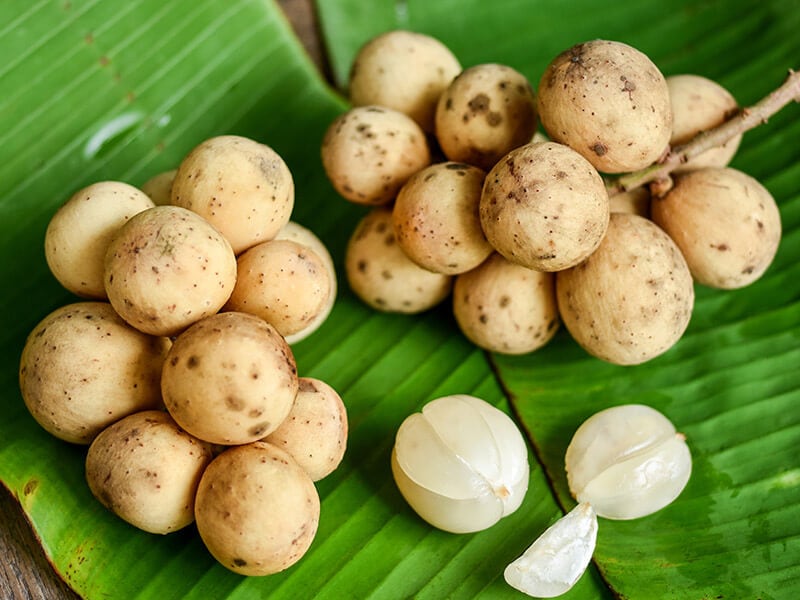
It is a shortcoming if I do not mention Langsat, Lanzones, or Longkang in this post. It is a famous fruit of Thailand and Southeast Asia. It is an excellent choice to make syrup in Thailand. Moreover, Thailand uses it as traditional medicine.
In Thailand, you can find elliptical, oval, or round Langsat. It has a thin hair covering around the skin. You can acknowledge it thanks to the light brown skin. It is possible to think of a small potato when looking at its appearance.
Its rind is pretty soft, so you can peel it by hand easily. Its cluster includes 4 to 5 segments. It has an opaque white hue. Its flavor combines grape and grapefruit tastes with sourness and sweetness.
You should be careful to eat it to avoid biting into the seed because it will leave a bitter flavor in your mouth. It has a large amount of fructose, glucose, and sucrose.
Nutrients: A source of protein, carbs, minerals, fiber, vitamin A, thiamine, and riboflavin.
Season: In Thailand, its season runs from July to October.
How to eat: You can consume its flesh after removing the skin.
Listen to some reviews after consuming Langsat.
14. Salak (Snake Fruit) – Sala
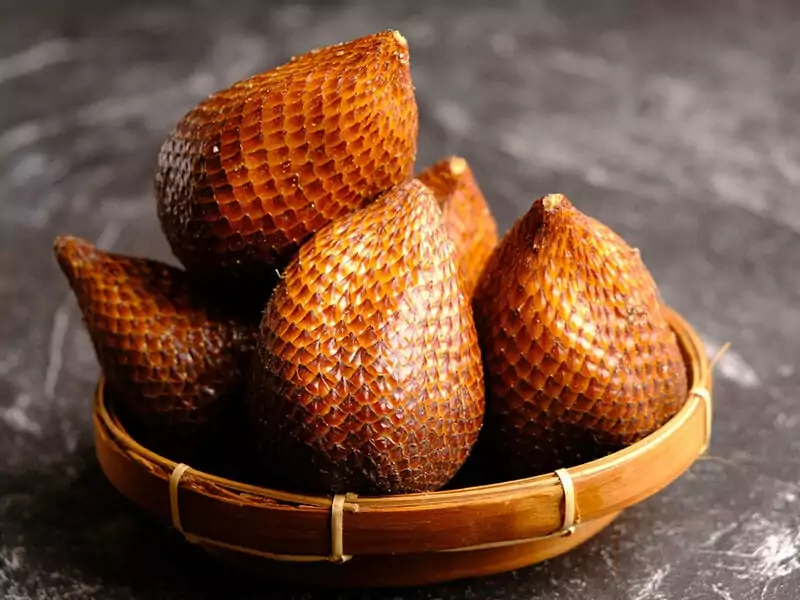
When referring to Thai fruits, it is impossible not to mention Salak. This fantastic fruit is native to Sumatra and Java in Indonesia, and it appears in many Indonesian foods and Thai foods.
Salak cultivation is common in many Southeast Asian countries, such as Thailand, Malaysia, etc. This fruit is created in the cluster of the palm. It has a reddish-brown scaly rind, so it is called “Snake Fruit”.
You can think of the shape of Fig when looking at it. It is possible to find about 3 prominent lobes and an inedible seed inside. The appearance of lobes is similar to peeled garlic. Its taste is distinctive with sweetness and tartness.
Moreover, the exotic fruit with a brown appearance has the same texture as an apple. However, you can catch various textures such as dry, moist, crunch, or crumbly. Thai people often consume raw Salak or mix it with a sauce made from salt and sugar.
Nutrients: Protein, calcium, vitamin C, carbs, beta-carotene, iron, and potassium.
Season: Its season runs from June to September.
How to eat: Remove its skin and separate segments to enjoy its flesh, and remember to get rid of seeds.
15. Guava – Farang
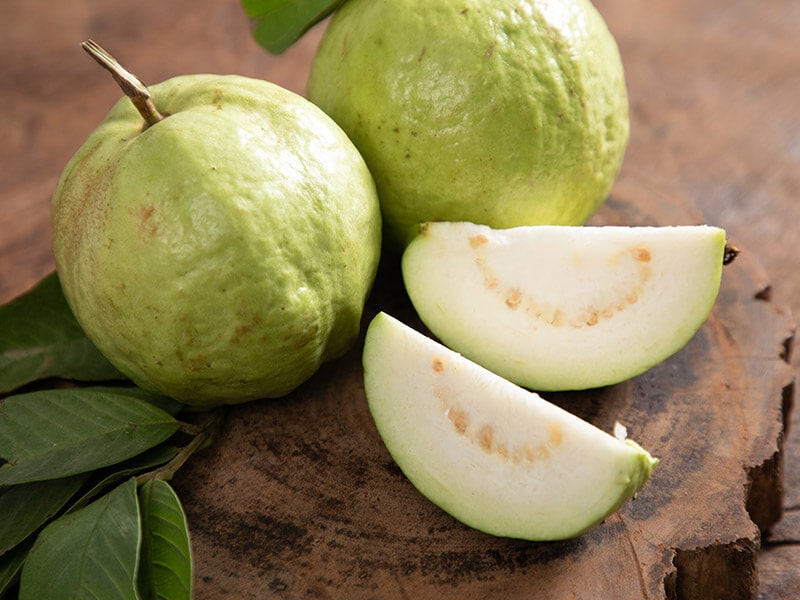
You can see Guava in most Southeast Asian countries. Although it is native to Central America, Mexico, South America, and the Caribbean, it is widely grown in Southeast Asian countries. Thai people often call it Farang.
European traders brought Guava to Thailand in the 17th century. You can consume it all year-round in this country. It is also a famous Vietnamese fruit. There are many different types of Guava, but Apple Guava is the most favorite variant.
It usually grows in round or oval shapes. Its rough skin is green when unripe and turns yellow or maroon when ripe. It is pretty soft and light bitter. You will love its white or deep pink flesh with sour and sweet tastes. It has numerous hard and tiny seeds.
You can consume raw Guava with chili salt or guava juice on hot summer days in Thailand. In addition, candies, snacks, and desserts that are prepared from Guava will not let you down.
Nutrients: It consists of dietary fiber, vitamin C, folic acid, calories, and minerals.
Season: It is available year-round in Thailand.
How to eat: Rinse and cut it into pieces to eat. If you do not like the bitter flavor of the skin, you can remove it with a knife. It will be better when eaten with chili salt.
16. Pomelo – Som-O
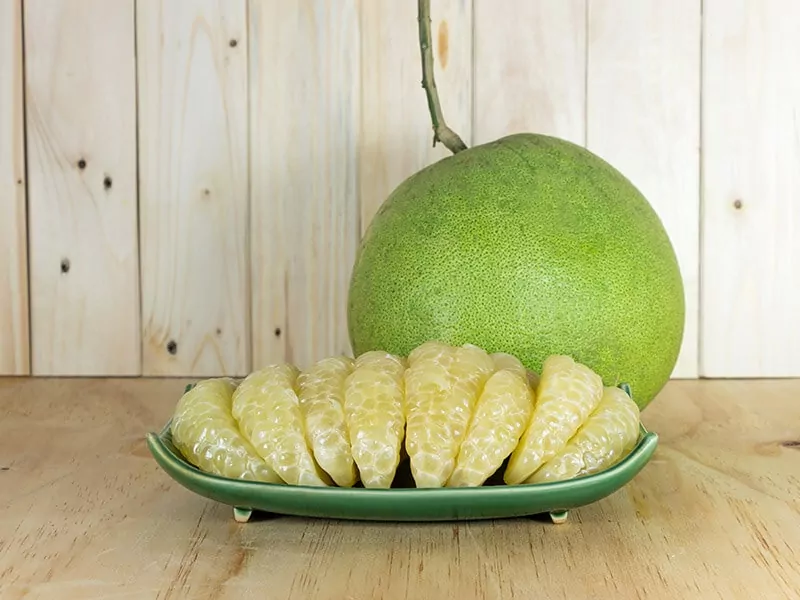
Pomelo is a must-try sweet treat when coming to Thailand. It is an ancestor of Grapefruit and is a common choice for festivals in Southeast Asian countries. It belongs to the Rutaceae family.
Its “Pomelo” name is derived from the word “Pompelmoes” of Dutch. Pomelo is a large fruit with about 6 to 10 inches. After peeling the thick green rind, you will see about 11 to 18 juicy segments.
You need to peel thin film outside the segment before eating since it is pretty bitter. Pomelo has a flavor that is similar to mild Grapefruit. When consuming Pomelo, you will feel a little sour, sweet, and bitter taste.
Typically, Thai people will eat fresh Pomelo with chili salt. Primarily, you should not ignore the spicy salad prepared from Pomelo, shrimp, and coconut milk of Thai cuisine. It acts as a marinade element in meat and seafood recipes to make a zesty and refreshing taste.
Nutrients: Rich in carbs, negligible fat, vitamin C, calories from Pomelo.
Season: It is available from March to August in Thailand.
How to eat: To enjoy this fruit, it is necessary to remove its skin and cut it into 2 halves. Use your hand to separate each segment to enjoy. It is important to discard the pith before consuming.
Let’s learn the tutorials to cook incredible Pomelo salad (Yum Som-O).
17. Rambutan – Ngor
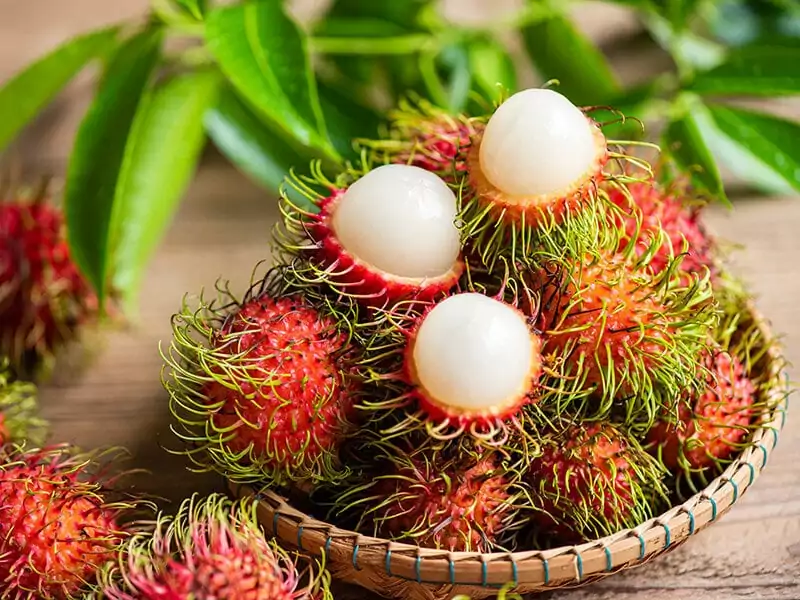
Rambutan is one of the famous Thai fruits that you have to try. It is native to Southeast Asia used in Malaysian, Lao, Filipino, and Indonesian foods. It is one of the members of the Sapindaceae family.
Its name is derived from the word “Rambut,” which means “hair” in Malay. Round rambutan includes 3 parts: skin, flesh, and a seed. Typically, it has reddish, orange, or yellow skin and is covered by countless fleshy pliable spines.
Its flesh is pretty similar to Lychee and Longan. Whitish and pale pink are popular colors. Its flavor is a blend of sweetness and a bit of sour taste. I thought of the flavor of grapes when consuming rambutan.
Nutrients: Rich in carbs, calories, vitamin C, manganese, calcium, potassium, folate, and vitamin A.
Season: Its season lasts from May to June in Thailand.
How to eat: Break its skin and eat its flesh, and you should eat around the pit and leave it away.
18. Sugar Apple – Noina
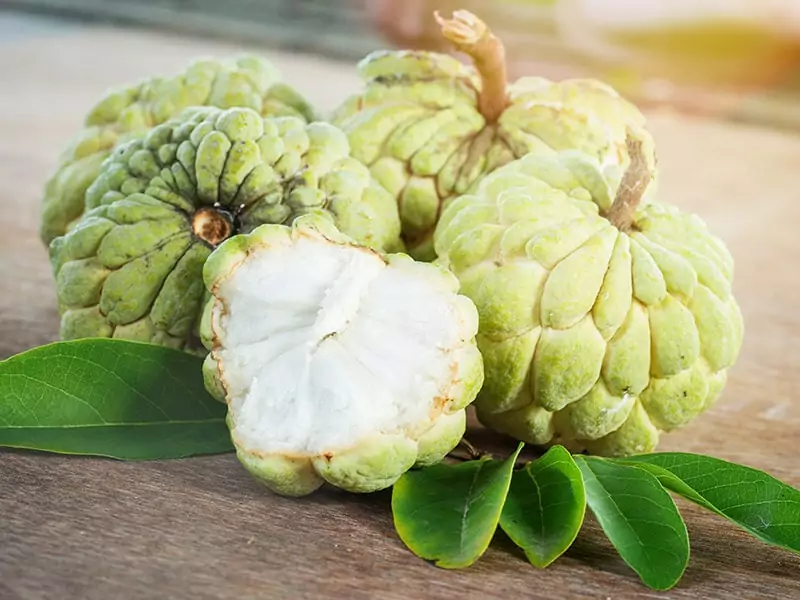
Sugar Apple is also known as sweetsop. It is native to the Americas and West Indies. It looks prominent with knobby green skin. Some of its variations have the appearance of deep pink blush.
After separating it into 2 halves, you will encounter countless white segments. And each segment will contain a tiny black seed. You will fall in love with the creamy texture of flesh. Moreover, its sour and sweet taste will make you flutter.
You can find some hybrid Sugar Apples from Cherimoya and Sugar Apple in Taiwan and Hongkong. It is also known as Pineapple Sugar Apple because the flavor is pretty similar to Pineapple.
Nutrients: It includes calories, proteins, fiber, carbs, vitamin C.
Season: Its season runs from June to September.
How to eat: Peel its green skin and cut or slice it into 2 parts. Use a spoon to eat its flesh, and carefully release the seeds when eating.
19. Santol – Krathon
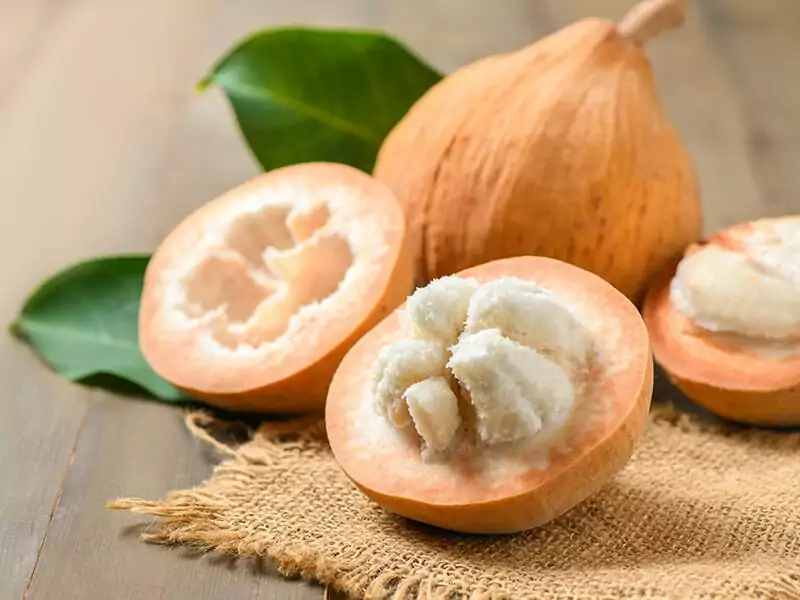
Santol originates in Malesian Floristic region. In addition, it is well-known in Sri Lanka, India, Mauritius, and Northern Australia. You can find it in Som Tam, prawn curries, or papaya salad of Thai cuisine.
There are 2 main types of Santol fruit, including yellow and red versions. Besides the color difference, both types have a thin rind. Its shape and size are pretty like an apple. It has a few seeds in the center of the fruit.
Its white pulp usually has a sweet and sour flavor, and its sweetness depends on the maturity of Santol. You can think of the taste of peach when enjoying it, but its flavor is milder than peach.
Nutrients: It includes calcium, vitamin C, and phosphorus.
Season: It is common in Thailand from April to August.
How to eat: Peel its skin, cut the fruit into 2 halves, remove the seed in the middle and enjoy it.
It is time to try Santol to find out its real flavor.
20. Plum Mango – Maprang
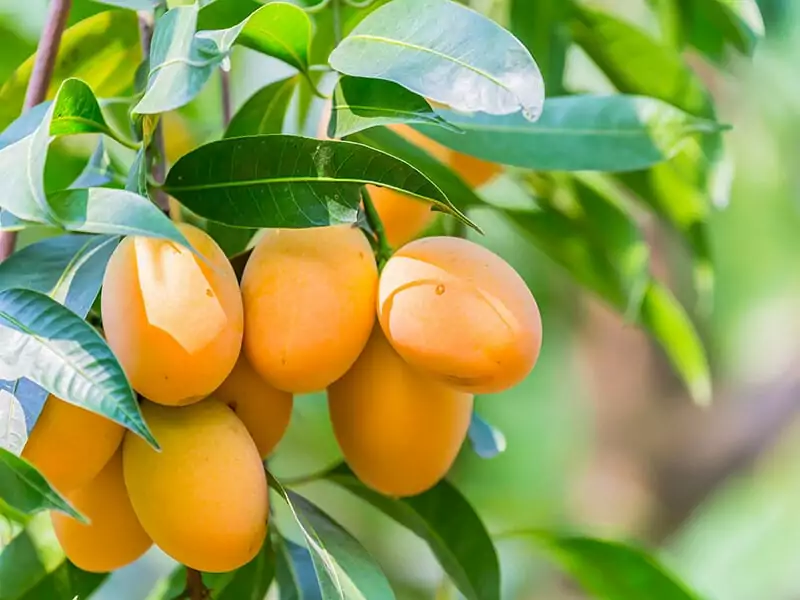
You will regret it when you do not consume Plum Mango. It is native to Indonesia and Burma, planted popularly in Thailand, Malaysia, and Laos. Do not confuse it with sweet mango that appears with sticky rice and coconut milk recipe.
Its appearance looks pretty similar to a small ripe mango with orange or yellow skin. It has a sweet and sour flavor, and acidity depends on its maturity level. Its flesh has a fragrance like sweet mango.
It has a tender and silky texture that makes you think of jelly. You can enjoy raw Plum Mango or combine it in Thai salads. Its flowers start hatching from November to December, and fruits will appear from April to May.
Nutrients: Rich in vitamin C, calories, carbs, and minerals.
Season: Its season runs from January to late May, and the peak season begins from April in Thailand.
How to eat: It is straightforward to enjoy it by peeling its skin and eating around the seed.
21. Rose Apple – Chompoo
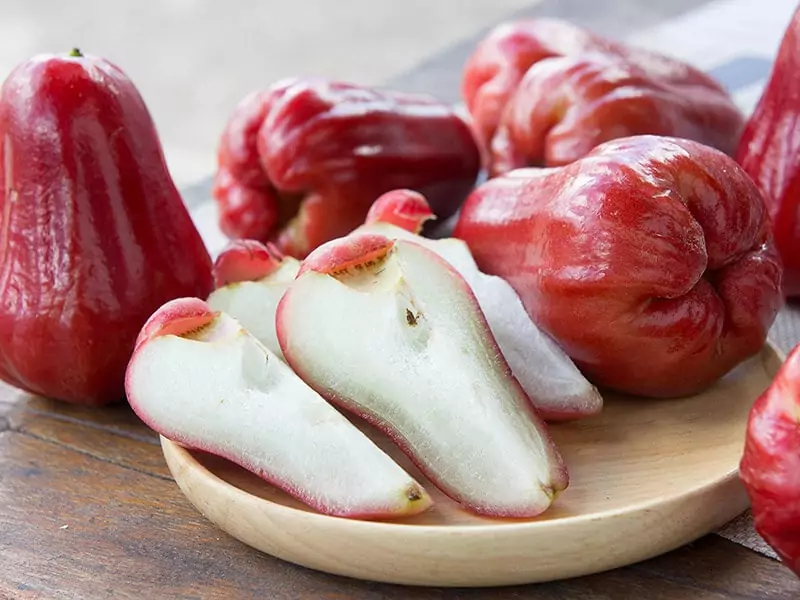
Rose Apple is a favorite tropical fruit in Thailand. You can catch it in Thai side dishes such as Thai spicy salad containing shrimp and chili peppers. Rose Apple originated in Malesia and Australia.
You will be impressed with its bell-like shape. It looks sleek with the wax layer covering the skin. It usually has bright red or light green color. You can consume its skin. Its flesh has a crunchy texture and juiciness.
It contains about 1 to 2 seeds in the middle of the fruit. Its characteristic flavor is a blend of sweetness and a bit of sourness. You can enjoy Rose Apple at any time of the year in Thailand.
Nutrients: It has protein, fiber, calcium, vitamin A, C, and iron with Rose Apple.
Season: It is available from May to June in Thailand.
How to eat: Remove its bottom part. Then, cut it into 2 slices and remove the seeds. You can eat it immediately or cut it into smaller pieces.
Leave Your Thoughts!
Do you love the fascinating flavor of fruits? Do you usually consume fruits after each meal? If yes, I am sure you will fall in love with these fruits I have introduced in this post immediately. Let’s take a trip to Thailand to experience them right now.
If your relatives plan to travel to Thailand, it is good to share this post with them. Because it is a pity if they miss specialty fruits in Thailand, do not forget to leave your thoughts after reading it. Thanks a lot!
